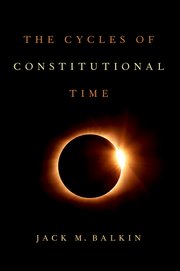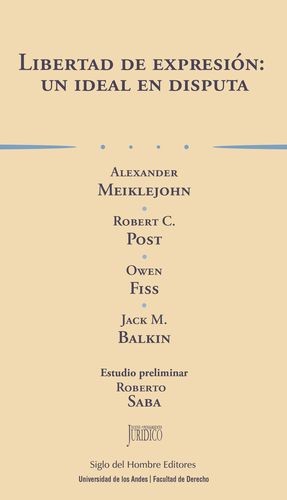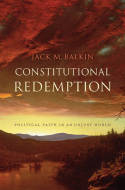The cycles of constitutional time
- ISBN: 9780197530993
- Editorial: Oxford University Press
- Fecha de la edición: 2021
- Lugar de la edición: New York. Estados Unidos de Norteamérica
- Encuadernación: Cartoné
- Medidas: 24 cm
- Nº Pág.: 246
- Idiomas: Inglés

What will happen to American democracy? The nation's past holds vital clues for understanding where we are now and where we are headed. In The Cycles of Constitutional Time, the eminent constitutional theorist Jack Balkin explains how America's constitutional system changes through the interplay among three cycles: the rise and fall of dominant political parties, the waxing and waning of political polarization, and alternating episodes of constitutional decay and constitutional renewal. If America's politics seems especially fraught today, it is because we are nearing the end of the Republican Party's political dominance, at the height of a long cycle of political polarization, and suffering from an advanced case of what he calls "constitutional rot." In fact, when people talk about constitutional crisis, Balkin explains, they are usually describing constitutional rot—the historical process through which republics become less representative and less devoted to the common good. Brought on by increasing economic inequality and loss of trust, constitutional rot threatens our constitutional system.
But Balkin offers a message of hope: We have been through these cycles before, and we will get through them again. He describes what our politics will look like as polarization lessens and constitutional rot recedes. Balkin also explains how the cycles of constitutional time shape the work of the federal courts and theories about constitutional interpretation. He shows how the political parties have switched sides on judicial review not once but twice in the twentieth century, and what struggles over judicial review will look like in the coming decades. Drawing on literatures from history, law, and political science, this is a fascinating ride through American history with important lessons for the present and the future.
Part One
Understanding the Cycles of Constitutional Time
Chapter One: The Recent Unpleasantness
A. Thinking in Terms of Cycles
B. The Framework of the Argument
Chapter Two: The Cycle of Regimes
A. Where Are We in Political Time?
B. The Waning of Poltical Time
C. Trump as the Great Reviver?
Chapter Three: The Cycle of Polarization
A. The Long Cycle of Polarization
B. Polarization in the Reagan Regime
C. Is Polarization Permanent?
Chapter Four: Constitutional Crisis
Chapter Five: The Cycle of Constitutional Rot and Renewal
A. Republican Insurance
B. The Four Horsemen of Constitutional Rot
C. The Political Economy of Republican Government
D. Constitutional Rot Produces Demagogues
E. A Demagogue for Our Times
F. The Acceleration of Constitutional Rot
G. The Bad News—and the Good News
Part Two
The Cycles of Judicial Review
Chapter Six: Judicial Review in the Cycles of Constitutional Time
A. Judicial time
B. The political supports for judicial review
C. Partisan entrenchment: judicial review and the party system
Chapter Seven: How the Rise and Fall of Regimes affects Judicial Review
A. Three questions about judicial review
B. Judicial review in the life-cycle of a political regime
C. The causes of change
D. Judicial review on the cusp of a new regime
Chapter Eight: The Role of Constitutional Theory in the Cycle of Regimes
A. The cycle of regimes and living constitutionalism
B. The cycle of regimes and originalism
C. The return of liberal skepticism about judicial review
D. Looking ahead
Chapter Nine: How Cycles of Polarization and Depolarization Shape the Exercise of Judicial Review
A. The judiciary in a depolarized world
B. The changing audience for judges
C. The end of elite consensus
D. The breakdown of the Carolene Products model
E. The collapse of the distinction between high and low politics
F. Disciplining "outliers" makes less sense
G. The federal judiciary as policy vanguard
H. The stakes of judicial appointments in a polarized world
Chapter Ten: Law in the Time of Constitutional Rot
A. Courts and party politics in an age of constitutional rot
B. Polarization limits judges' abilities to recognize and halt constitutional rot
C. Judicial decisions can exacerbate constitutional rot by increasing economic inequality
D. Rot increases as courts become the policy vanguard
E. Rot generates constitutional hardball, which further undermines trust in the courts
F. Courts cannot protect democracy because they do not agree about what it is
G. Constitutional rot generates a "reverse-Carolene Products" effect
Chapter Eleven: Judicial Politics and Judicial Reform
A. Judicial politics in the next regime
B. Reforming the Supreme Court
Part Three:
Conclusion
Chapter Twelve: The Turn of the Cycles
A. How Polarization Leads to Disjunction
B. A New Regime without a Social Movement Party
C. The New Party Configuration
D. The Limits of a Cosmopolitan Party
E. How Constitutional Rot Ends
Acknowledgments
Index









